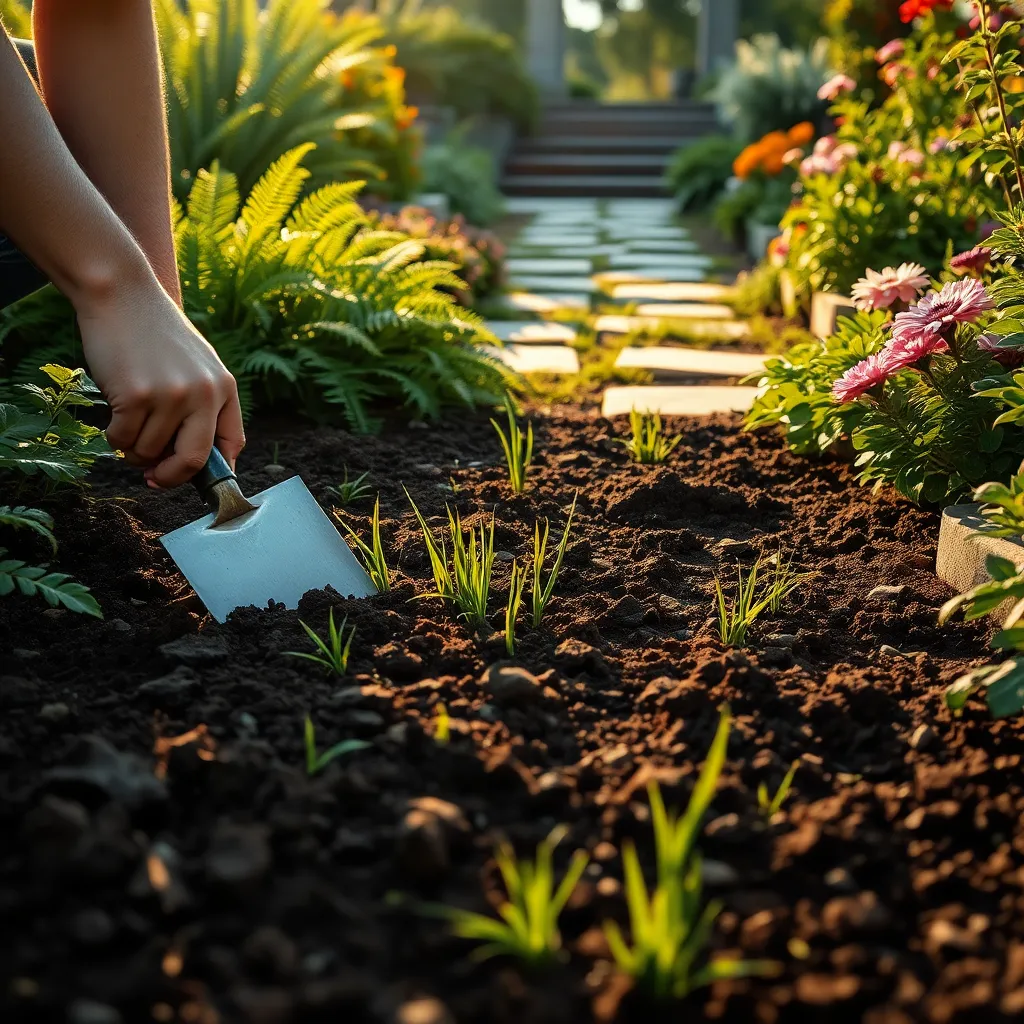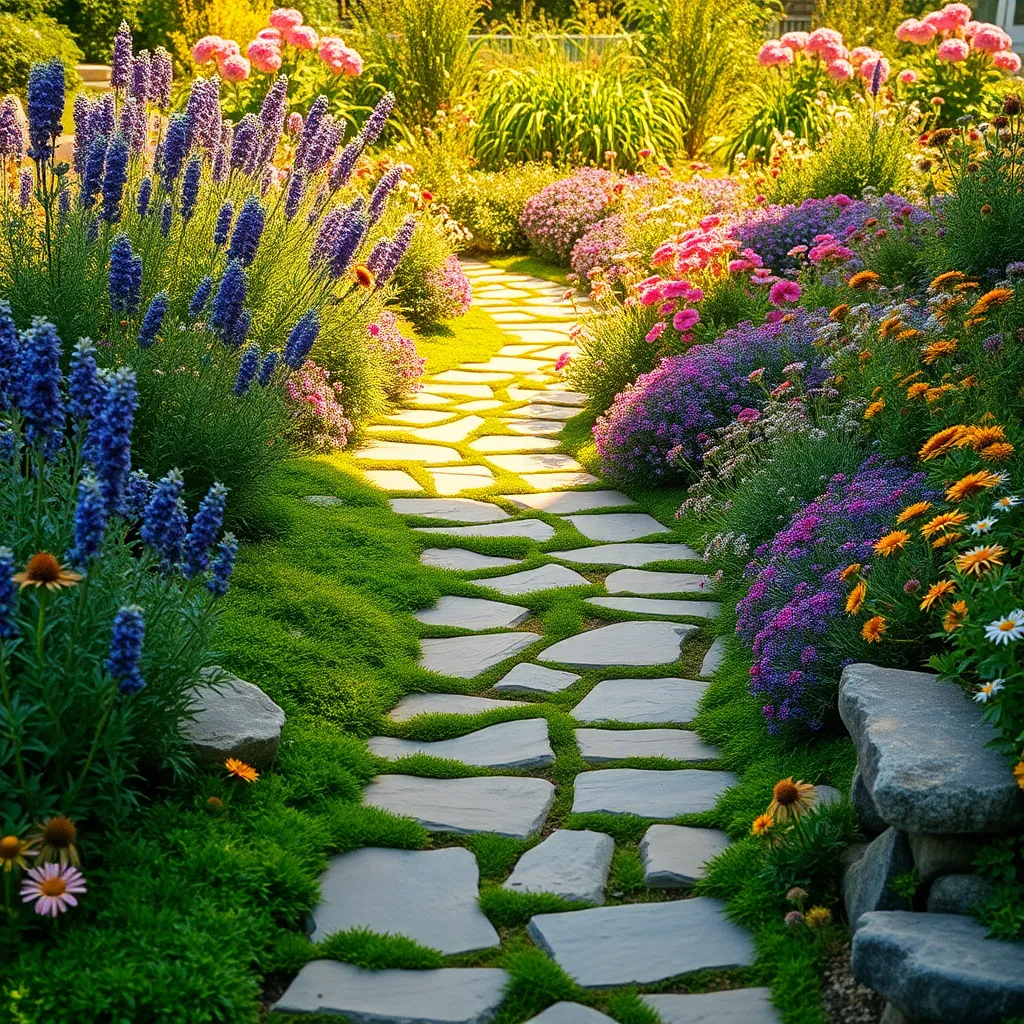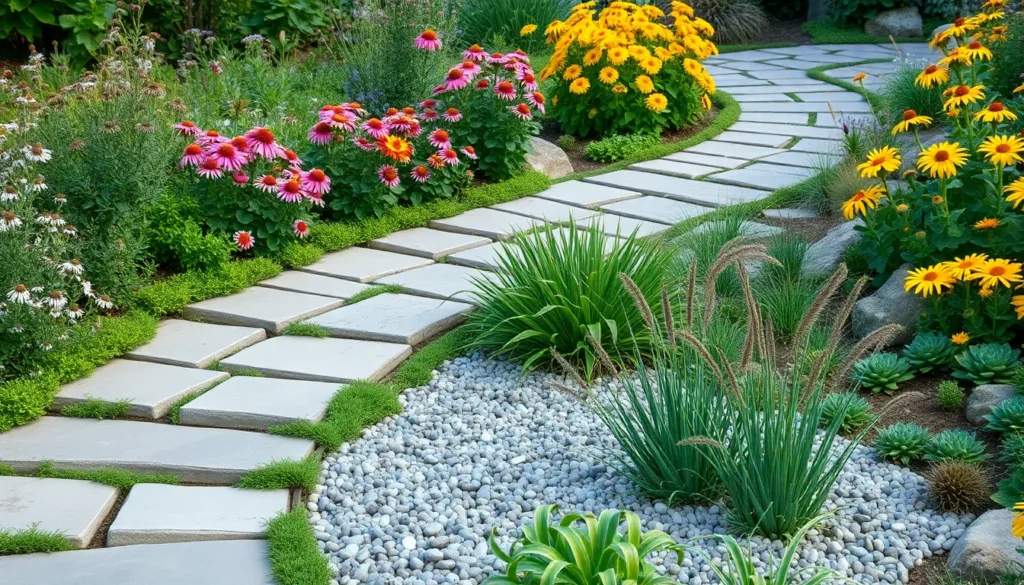Imagine stepping into your garden and being greeted by a pathway that not only guides your footsteps but also enhances the beauty and functionality of your outdoor space. A thoughtfully designed garden pathway can transform your garden from a mere collection of plants into a cohesive, enchanting landscape. Whether you’re a novice gardener taking your first steps into the world of horticulture or a seasoned green thumb seeking new ways to elevate your garden’s charm, creating a pathway is an art form that invites creativity and practicality in equal measure.
In this article, we will explore the fundamentals of designing a captivating garden pathway, offering insights that cater to all skill levels. You’ll discover how to choose the right materials, styles, and layouts that complement your garden’s unique character. We’ll delve into the nuances of integrating pathways with the natural flow of your garden, ensuring that every step you take is both a visual delight and a functional necessity. Join us as we journey through the possibilities that a beautifully crafted garden pathway can offer, and unlock the secrets to making your garden not just a place to grow plants, but a sanctuary to wander and unwind.
Select Your Pathway Location

When selecting a location for your garden pathway, consider the natural flow of movement around your garden. Observe how you and others naturally traverse the space, as this will help you determine the most logical and convenient pathway routes.
It’s crucial to ensure that your pathway location receives adequate sunlight or shade based on the surrounding plant needs. For instance, if your path runs through a sunny area, consider adding drought-tolerant plants nearby to reduce water requirements.
Begin by marking out potential pathway routes using garden hoses or ropes, which can be easily adjusted. This allows you to visualize the path’s flow and make changes before committing to a specific design.
Take note of any drainage issues in your garden that might affect the longevity of your path. Ensure the pathway is slightly sloped to encourage water runoff, preventing puddles and erosion.
Choose Suitable Path Materials

Choosing the right materials for your garden pathway is crucial for both aesthetics and functionality. Start by considering the climate in your area, as some materials may not withstand extreme weather conditions.
Gravel is a popular choice due to its versatility and affordability. It works well in most climates, but ensure you install a proper base layer to prevent sinking and improve drainage.
For a more rustic look, consider using mulch, which is easy to lay and helps retain moisture in the surrounding soil. Keep in mind that mulch may need to be replenished regularly, especially in areas with heavy foot traffic.
Concrete and stone provide a more durable option, suitable for areas with high rainfall or frequent use. These materials require a solid foundation and professional installation, but they offer a long-lasting and low-maintenance solution.
Design a Harmonious Layout

To create a harmonious layout for your pathway, consider the overall shape and flow of your garden. Curved paths often feel more natural and inviting, while straight paths can create a formal look.
Next, select plants that complement the materials used in your path. For example, low-growing groundcovers like creeping thyme or sedum can soften the edges of stone or brick pathways.
Incorporate varying heights and textures to add depth and interest along the path. Use taller plants or shrubs like lavender or ornamental grasses to create natural borders and guide the eye.
Ensure that the plants you choose match the growing conditions of your garden path area. Most pathways benefit from plants that thrive in well-drained soil, so consider adding organic matter to improve soil structure if needed.
Watering is crucial for establishing new plants along your pathway. Initially, water deeply once a week to encourage deep root growth, then adjust based on the plant’s specific needs and local weather conditions.
Prepare the Ground Properly

Preparing the ground properly is a crucial step to ensure your garden pathway stands the test of time. Begin by clearing the area of any existing vegetation, rocks, or debris, using a shovel or a tiller for larger spaces.
Next, you’ll want to define the pathway’s borders using stakes and string to create a clear outline. This ensures a precise layout and helps you visualize the final design, making it easier to adjust before committing to digging.
Digging the pathway’s foundation is essential for stability and longevity. Aim to dig at least 4 to 6 inches deep, depending on the materials you’ll use, to accommodate the base layers and ensure proper drainage.
For optimal drainage and weed prevention, lay a layer of landscape fabric over the cleared and leveled ground. This simple step is crucial in maintaining the pathway’s appearance and can significantly reduce maintenance efforts in the long run.
Once the landscape fabric is in place, add a base layer of crushed stone or gravel, which should be about 3 to 4 inches thick. Compact the base layer thoroughly using a tamper or a plate compactor to provide a solid foundation for your pathway materials.
Finally, consider the specific climate and soil type in your area to select the most appropriate pathway materials. In wetter climates, for instance, permeable pavers or gravel can prevent water pooling and reduce erosion.
Install and Secure Path Elements

Once the ground is prepared, it’s time to install your chosen path elements to bring your garden pathway to life. Begin by laying out the materials on the prepared surface to visualize the final look and ensure everything fits well.
Consider using a variety of materials like stones, bricks, or gravel to add texture and interest to your path. Position them closely together to minimize gaps and create a smooth walking surface.
When working with stones or bricks, use a rubber mallet to tap them into place, ensuring they are level and secure. This will help prevent shifting over time and maintain a stable pathway.
To further secure the path elements, fill the gaps between them with sand or small pebbles, which provides stability and a polished finish. Compact the filler material with a broom or tamper to ensure it settles evenly.
Regular maintenance is key to keeping your garden path looking its best. Periodically check for loose or uneven elements and make adjustments as needed to maintain a safe and attractive path.
Conclusion: Growing Success with These Plants
As we journey through the art of designing a beautiful garden pathway, we uncover five essential relationship concepts: communication, flexibility, patience, creativity, and maintenance. Just as a pathway requires careful planning and thoughtful materials, strong relationships thrive on open dialogue and adaptability. Understanding the ebb and flow of patience allows us to nurture relationships with grace, while creativity sparks joy and innovation in our interactions. Lastly, maintenance, much like tending to a garden, ensures lasting connection and growth.
Now, take a moment to reflect on your relationships. Choose one concept that resonates with you and commit to embodying it today. Whether it’s initiating a heartfelt conversation or finding a creative way to surprise a loved one, small actions can lead to profound changes.
As you embark on this enriching journey, remember to save or bookmark this article. It can serve as a guiding light, providing insights and reminders to cultivate relationships that are as beautiful and enduring as any garden pathway.
Embrace these principles, and with each step, you’ll find yourself on the path to deeper, more fulfilling connections. Your relationship success story is just beginning, and the future holds endless possibilities.







